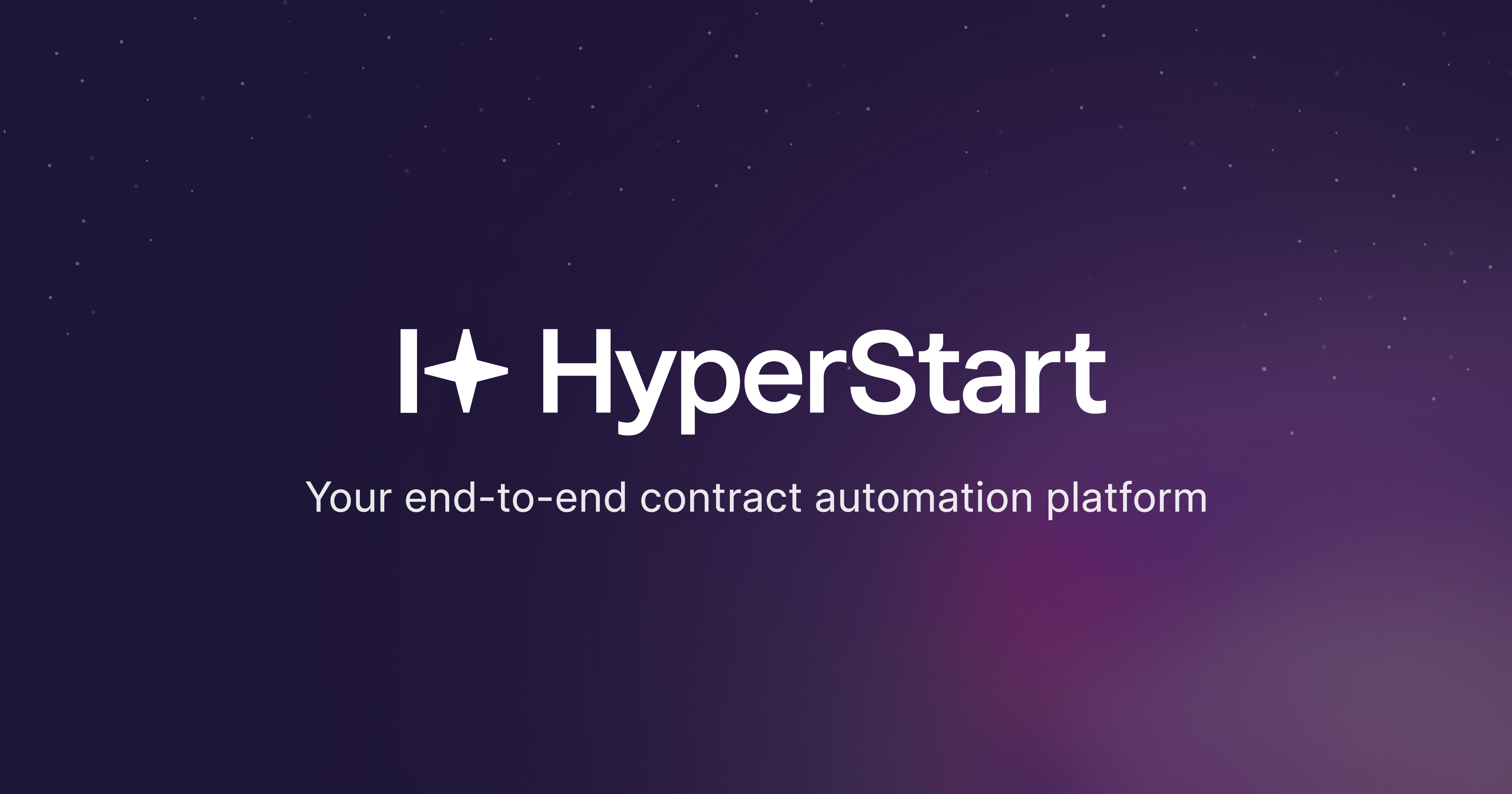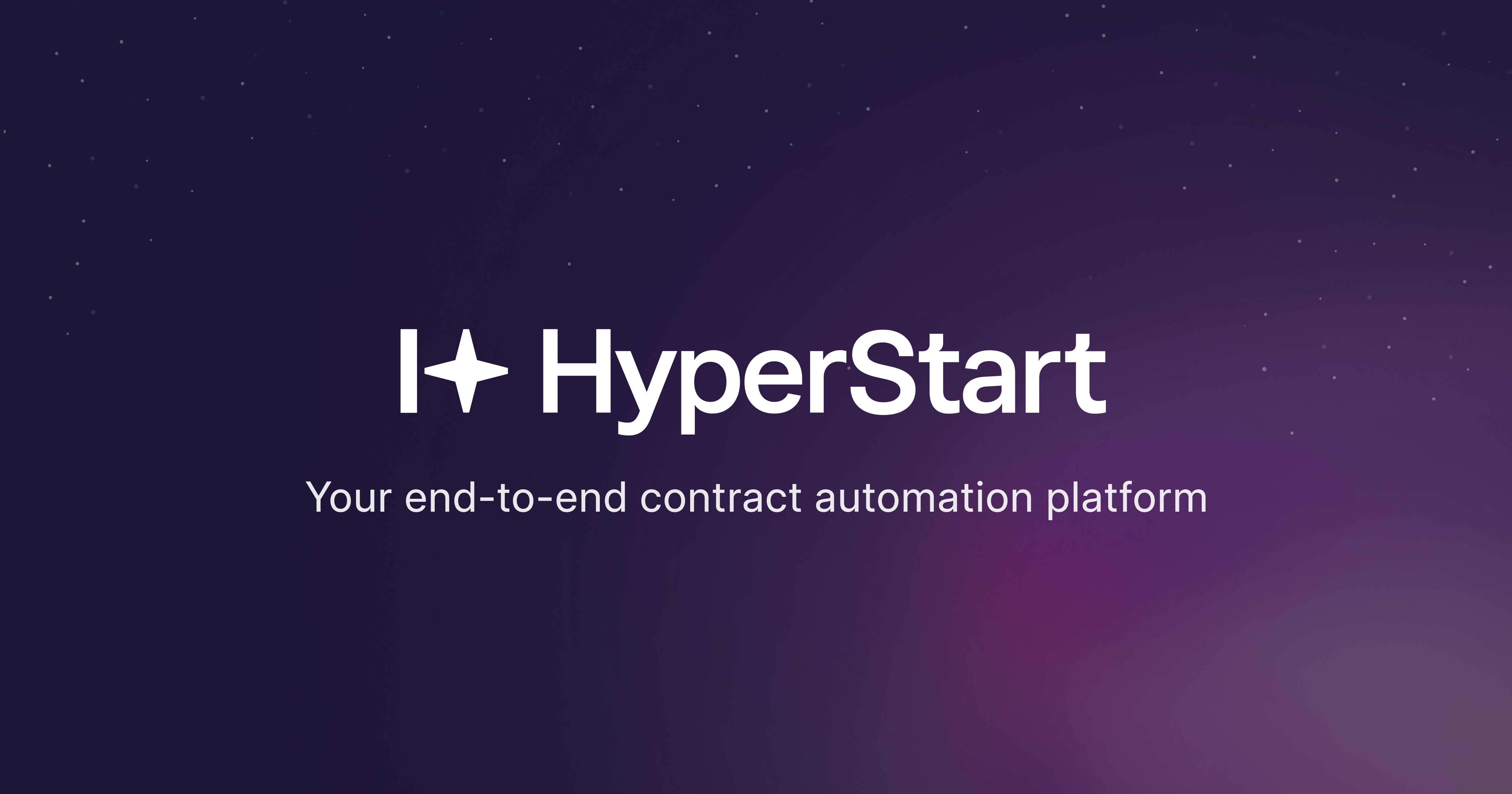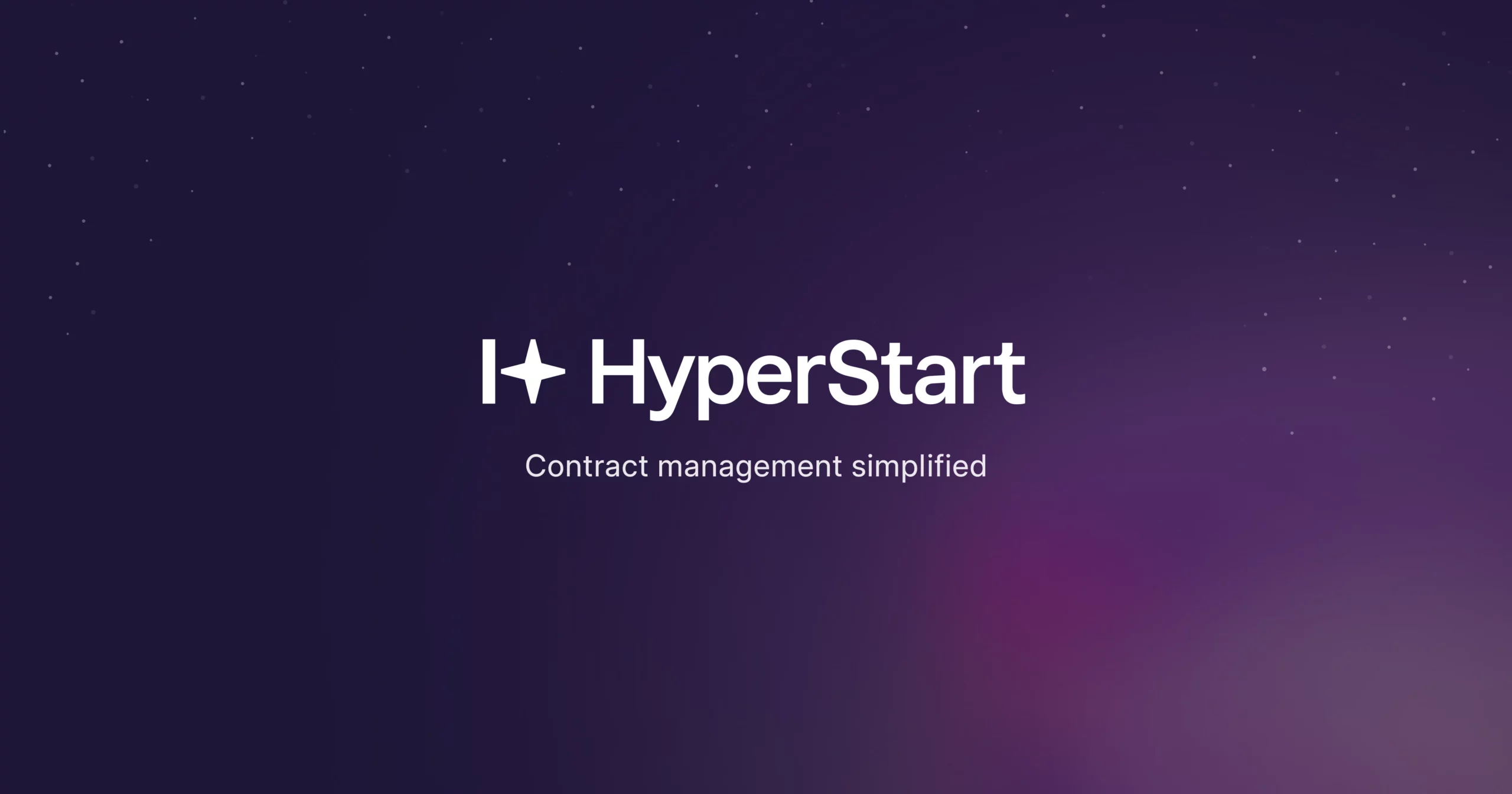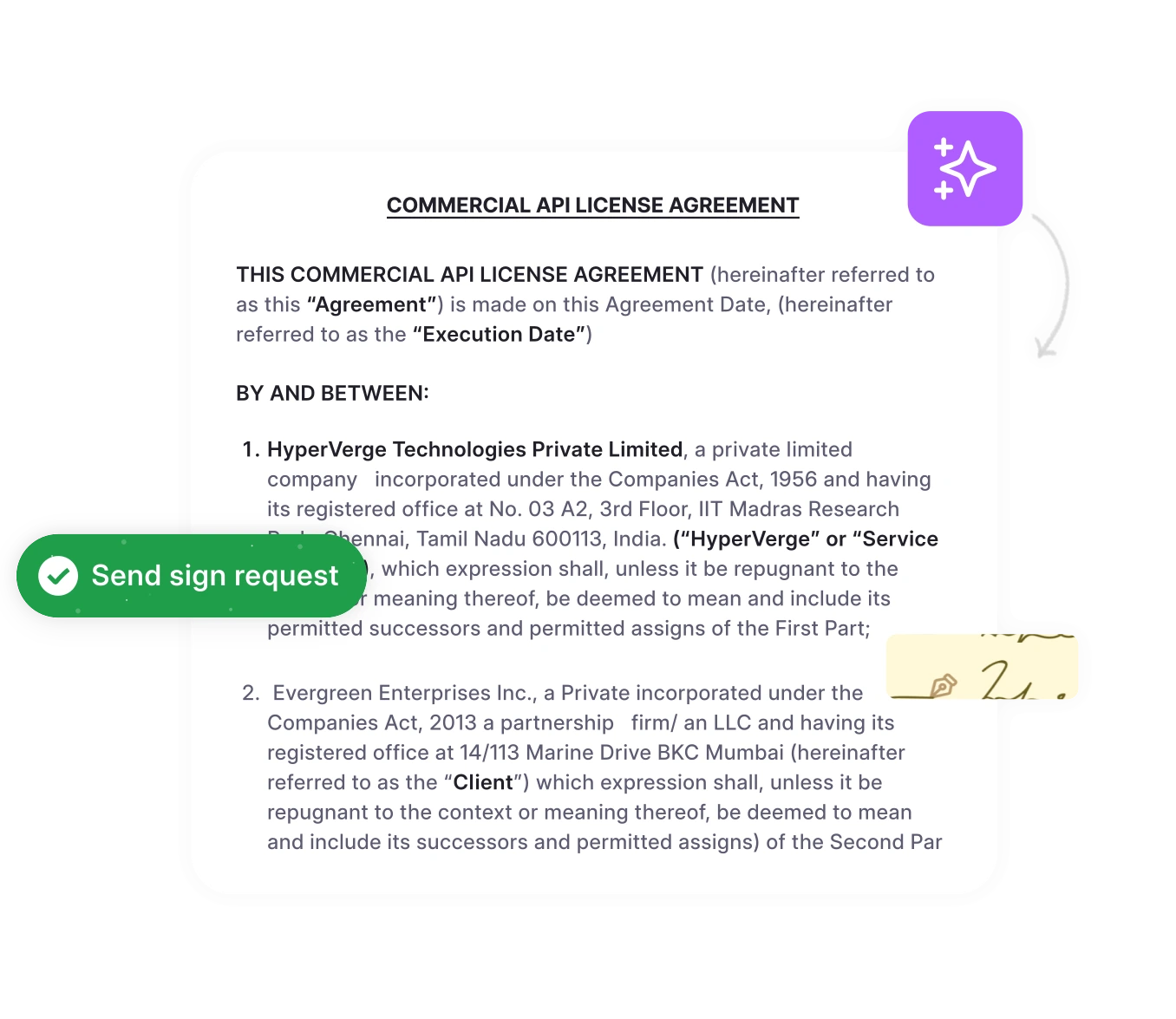Effective and efficient contract management is important for every organization, regardless of its scale of operations. Two primary ways to manage contracts are digital and traditional contact management.
Digital contract management excels in terms of contracting efficiency, speed, and precision. Technologies like artificial intelligence (AI) help manage the contract lifecycle within a few clicks, giving more bandwidth to contract managers for other important tasks.
This blog is your ultimate guide to managing contracts digitally. Read to know how digital approaches can accelerate CLM efficiency and elevate how you manage contracts in your organization. Let’s start.
What is digital contract management?
Digital contract management refers to the use of digital tools like spreadsheets, excel, or contract management systems to handle contractual processes. This approach replaces paper-based contract management where agreements are managed manually.
The digital approach helps embrace automation in contract management—enabling organizations to overcome many of the pitfalls of traditional methods. Wondering how? Here’s a comparison between digital and traditional contract management:
| Aspects | Traditional CLM | Digital CLM |
| Efficiency | Inefficient and time-consuming | Highly efficient and automated |
| Obligation Tracking | Tracking obligations takes time | Automated tracking with reminders |
| Creation Time | Drafting a contract takes hours | Contract drafting takes minutes |
| Chances of Errors | High chances or oversights | AI ensures minimal errors and oversights |
| Version Tracking | Challenging to track versions across redlining | Detailed audit trails help log all revisions |
| Contract Analytics | Analytics are difficult to track | Reporting dashboards give performance insights |
| Security | Contract security is difficult to manage | Controlled user access ensures high security |
Clearly, digital contract management outshines age-old traditional approaches. This is especially the case with a digital contract management system (DCMS).
However, there’s more to why you should manage agreements digitally. Let’s take a look at the benefits of managing contracts digitally.
Dealing with scattered paperwork and slow approvals in traditional contract management?
See how HyperStart CLM simplifies and accelerates your contract lifecycle management processes.
What are the benefits of digital contract management?
Managing agreements digitally, especially through contract management software offers an opportunity to streamline the entire contract lifecycle compared to traditional methods. Here’s how:
1. Centralize and easily access contracts with cloud storage
According to research conducted by World Commerce and Contracting—A research institution based in the USA—60% of the 800 respondents agree to have implemented a digital contract repository.
Cloud-based contract management helps remotely access contracts from any location and AI-powered search helps locate contracts using key terms.
2. Pre-defined paths for approvals eliminate manual routing
Contract approval processes can be confusing and involve excessive to-and-fro. Digital contract management software like HyperStart CLM offers no-code workflow builders that help streamline and automate the agreement approval process.
3. Draft contracts quickly and accurately with pre-approved templates
With digital contract management software like HyperStart CLM, you have ready-to-use templates for various contract types like NDAs or service agreements. Smart contract creation software offers generative AI-based drafting assistants and clause libraries for quick contract creation—empowering non-legal teams can generate agreements on their own.
4. Expedite signatures anytime anywhere with digital signing
With electronic signatures, contracts can be signed instantly from any device significantly expediting the process. You no longer need to wait for someone to be in the office or available to sign. Parties can sign from anywhere — whether at home on the move or in another country — eliminating delays caused by coordinating schedules and locations.
5. Ensures contract accuracy and transparency with version control
Multiple contract versions floating around via email lead to confusion and errors. It’s hard to know which one’s the latest. Every change made to a contract is tracked. You can see who made what edits and when. This level of transparency means you can easily follow the history of changes and understand how the contract evolved.
6. Connects to CRM ERP and other business software
Integration keeps different teams connected and eliminates the need for manual data entry between systems. Contract management tools connect with ERPs, CRMs, HRMs, and other business apps to foster cross-department collaboration in the contract management ecosystem.
7. Real-time editing and commenting for all parties
With real-time visibility into changes and edits, stakeholders can provide feedback and approvals much quicker. This eliminates delays caused by waiting for email replies or chasing down approvals. A clear history of edits and comments is maintained within the collaborative workspace.
8. Automated notifications for upcoming deadlines
Renewal and expiry alerts in digital contract management platforms take human forgetfulness out of the equation. The software automatically triggers notifications well before upcoming contract renewals or expiries. This gives you ample time to initiate renewal renegotiate contract terms if needed or secure alternative services.
These benefits highlight the potential of electronic agreement management. Now, how to shift from manual contract management to digital approaches? Let’s find out.
Lost in filing cabinets and endless emails?
HyperStart CLM offers streamlined contract management with AI-powered organization and easy access.
How to shift from traditional to digital contract management?
1. Become familiar with the contract management software
Since contract management software is at the core of digital agreement management, it is important to be familiar with all the features, functionalities, and use cases of the tool. Depending on the available integrations, your sales, HR, finance, procurement, and other business teams may also need to be familiar with the electronic contract management system.
2. Assign a contract digitalization team
Apart from the CLM vendor you choose for contract digitalization, it is important to have key points of contact to oversee the implementation of the digital contract management platform. These individuals help address internal challenges in CLM implementation and ensure that the software aligns with company protocols.
3. Train your team on digital approaches
Routine employee training helps gain familiarity with the software’s processes. You can create different training programs for different people based on their roles and use of the legal document management software. This helps clarify responsibilities and gain familiarity with the platform.
4. Routinely audit contract performance
Once implemented, the software and your contract management processes must be audited from time to time. Compare metrics from traditional and digital processes in aspects like CLM duration, contract TAT, number of bottlenecks, and user satisfaction score to measure the success of electronic contracts in your organization.This process helps ensure smooth and frictionless CLM implementation. However, apart from this process, it is important to choose the right contract management software with the right features for effective CLM digitalization.
Top features to ensure in digital contract management software
Here are the key contract management software features and how they enhance contract management efficiency.
| Feature | Description |
| Centralized Repository | Secure cloud-based storage with advanced search functions for quick document retrieval. |
| Automated Workflows | Templates and clause libraries for contract drafting; automated routing for review and approval. |
| Collaboration Tools | Real-time editing and commenting within documents for enhanced teamwork and communication. |
| Version Control | History of edits and revisions with the ability to revert to previous versions. |
| E-Signature Integration | Legally binding electronic signatures with detailed audit trails for compliance. |
| Alerts and Notifications | Automated reminders for renewals and expirations–notifications for key milestones and obligations. |
| Compliance and Risk Management | Ensures contracts meet legal standards–identifies and mitigates risks through predefined criteria. |
| Integration Capabilities | Integration with CRM ERP and other business systems–custom API integrations. |
| User Permissions and Security | Role-based access controls and data encryption to protect sensitive information. |
| Audit and Reporting | Comprehensive logs of contract actions–customizable reports for stakeholders. |
| Clause and Template Management | Storage and management of standard contract clauses–creation and use of templates. |
Ensure these features in your contract management software to ensure sleek digitalization. Apart from these features, there are other factors to consider while choosing a platform for digital contract management. Keep reading to find out more about these factors.
4 Factors to consider while choosing a digital contract management software
Evaluate your contract management software options based on these criteria to find the right platform:
Interface user-friendliness: User-friendly interfaces reduce the learning curve enabling teams across departments to adopt and utilize the software effectively.
AI-powered features for automation: AI features help maximize routine contract tasks, giving business teams to focus on managing contracts.
Scalability and customizability: Your CLM should accommodate increased contract volumes and user numbers as your business expands.
Security and legal compliance: Verify that the CLM software complies with relevant data privacy regulations like GDPR or HIPAA depending on your industry and location.
These factors help find a platform that facilitates effortless contract management. If you are looking for reliable, automated, and efficient software for contract digitalization, choose HyperStart CLM.
Manage contracts 80% faster with HyperStart CLM
HyperStart CLM is an advanced Contract Lifecycle Management (CLM) software solution designed to streamline and automate the entire contract management process. It empowers businesses to create, manage, negotiate, approve, sign, store, and track contracts efficiently and securely. Here are some of the reasons to choose HyperStart CLM for your business:
Accelerate contract creation by up to 80%
Redline and extract contract data with 99% accuracy
Accelerate approval times by up to 50% and ensuring compliance
Sign from anywhere with multiple eSigning options
Centralizes contract storage with a unified repository
Integrates seamlessly with CRM systems and other business applications
Facilitate 5x faster contract review and execution times
If you are curious to understand how HyperStart CLM can simplify your contract management in detail let’s set up a demo just for you. Book a demo today and take the hassle out of managing contracts.
Frequently asked questions
Yes, it is possible to migrate legacy contracts to digital contract management tools. Most digital contract management software offers import functionality where you can connect the repository with CRMs, ERPs, HRMs, drives, and emails. The repository automatically migrates contracts from these sources to a unified digital repository.
Moreover, tools like HyperStart CLM have in-built AI and OCR technology. This technology helps migrate paper agreements, images, and PDFs into the repository, along with other legacy agreements.








![13 Best Contract Management Software in 2025 [A Guide]](https://www.hyperstart.com/wp-content/uploads/2024/05/1-1-1_3_600x339.webp)



